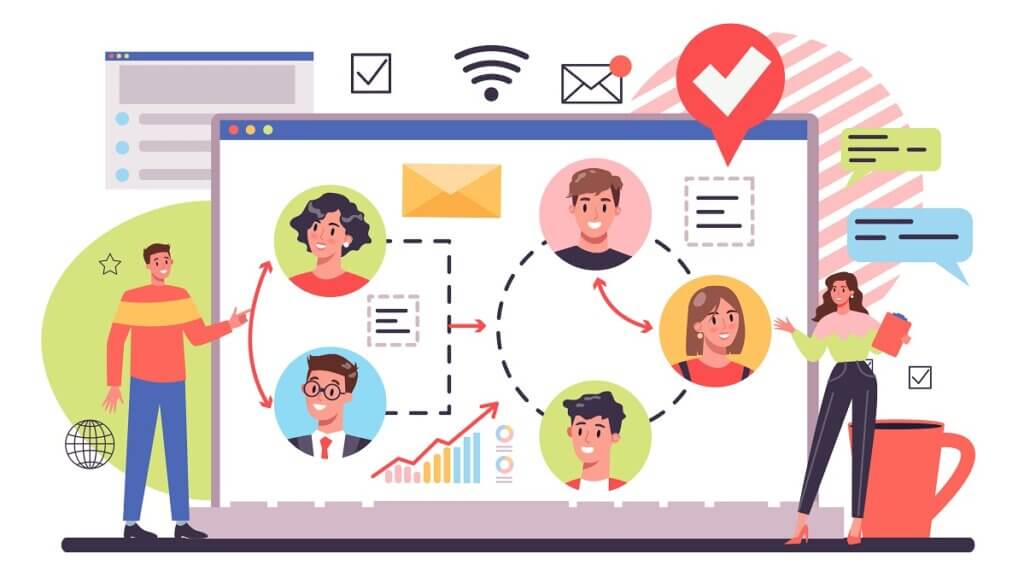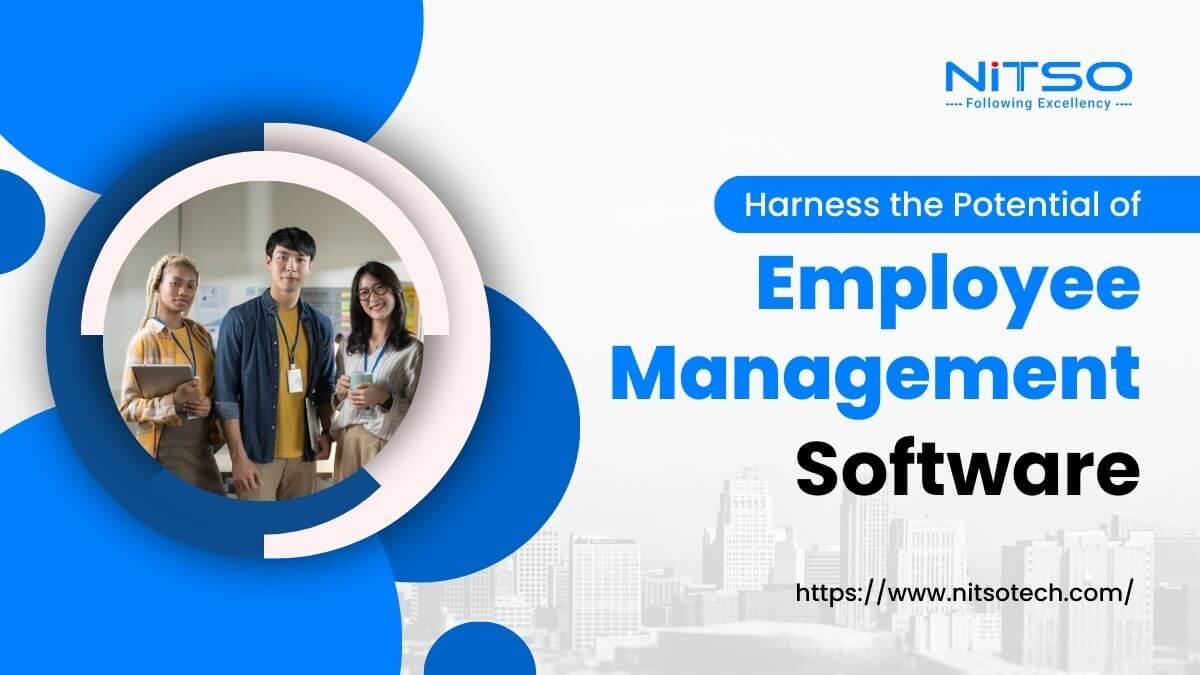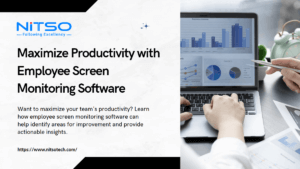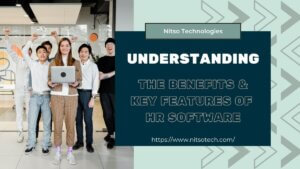In today’s fast-paced business world, maximizing efficiency and productivity is key to staying ahead of the competition. Effective employee management represents a critical component to achieving success. Companies that invest in top-notch employee management software have an advantageous edge regarding human resources processes while simultaneously enhancing communication across all departments with simplified integration options. Whether it’s tracking employee attendance or tracking individual performances, these software systems are capable of helping businesses manage payrolls more efficiently so that they may ultimately derive more value from their human capital investments. So, let us explore these tools to fully grasp their functionalities.
Table of Contents
Benefits of using employee management software
Using employee management software can bring about numerous advantages to organizations irrespective of their size. By adopting this technology companies can channel their focus towards strategic HR initiatives while simultaneously promoting a constructive work culture. Such practices contribute significantly towards achieving long-term success for the business. Here are some of the key advantages:
- Streamlined HR Processes: Employee management software automates and centralizes various HR processes, such as employee onboarding, attendance tracking, leave management, performance evaluations, and more. This streamlines administrative tasks and reduces manual paperwork, saving time and effort for HR personnel.
- Enhanced Efficiency: By automating routine HR tasks, employee management software improves overall efficiency. It reduces the chances of errors, eliminates duplication of efforts, and allows HR professionals to focus on strategic activities that add value to the organization.
- Improved Data Accuracy: Manual record-keeping can be prone to errors and inconsistencies. Employee management software maintains accurate and up-to-date employee records, including personal information management, employment history, performance data, and training records. This ensures data integrity and facilitates easier access when needed.
- Easy Access to Information: With employee management software, all employee-related data is stored in a centralized system, making it readily accessible to authorized personnel. This allows HR teams, managers, and employees themselves to quickly retrieve and update relevant information, such as contact details, work schedules, performance feedback, and benefits.
- Effective Communication: Many employee management software solutions include communication features, such as employee self-service portals, internal messaging systems, and shared calendars. These tools facilitate seamless communication between HR, managers, and employees, ensuring everyone stays informed and connected.
- Enhanced Employee Engagement: Employee management software often includes features that promote employee engagement and empowerment. For example, it may provide self-service portals where employees can access their own information, submit time-off requests, view their performance goals, or participate in training programs. Such tools foster a sense of ownership and involvement among employees.
- Performance Tracking and Evaluation: The software can automate performance management processes, allowing managers to set goals, track progress, provide feedback, and conduct performance appraisals more effectively. This ensures a structured approach to performance management, leading to better employee development and overall organizational performance.
- Data Analytics and Reporting: Employee management software often comes with robust reporting and analytics capabilities. HR professionals can generate customized reports, analyze trends, and derive insights from the data to make informed decisions regarding workforce planning, training needs, talent management, and more.
- Compliance and Security: Employee management software helps organizations comply with various labor laws and regulations. It enables accurate tracking of attendance, leaves, overtime, and other time-related data, reducing compliance risks. Additionally, it ensures data security through access controls, data encryption, and regular backups, protecting sensitive employee information.
Features of employee management software
Employee management software is tailored to enhance HR processes and communication by featuring a variety of capabilities. Some of the most common features include:
Attendance tracking
This feature allows employers to track employee attendance and manage schedules, reducing the risk of errors and ensuring that employees are paid accurately.
Payroll management
Employee management software can automate payroll processes, calculate taxes and deductions, and ensure that employees are paid on time.
Performance management
These tools can help managers to track employee performance, set goals, and benchmarks, and provide feedback and coaching.
Benefits management
Employee management software can help companies to manage employee benefits such as health insurance, retirement plans, and paid time off.
Communication tools
These tools can include email, chat, and messaging features, allowing employees to communicate with each other and with management more easily.
Top employee management software in the market
There are many employee management software options available on the market today. Some of the most popular options include:
- BambooHR: This cloud-based HR software offers a range of features including applicant tracking, onboarding, performance management, and benefits administration.
- Gusto: Gusto is a payroll and benefits software that offers features such as automated payroll, employee self-service, and compliance reporting.
- Nitso HRMS: Nitso HRMS is an all-in-one HR software that includes features such as payroll, benefits, time tracking, and compliance management.
- Workday: Workday is a cloud-based software that offers features such as HR management, payroll, and talent management.
- ADP: ADP offers a range of HR solutions including payroll, benefits administration, time and attendance tracking, and talent management.

How to choose the right employee management software for your business?
Selecting the best employee management software for your business necessitates a thoughtful evaluation of your companys’ specific needs and targets. Here are some steps to help you in the selection process:
- Assess your Requirements: Start by evaluating your current HR processes and identifying areas where you need improvement. Determine the specific features and functionalities you require, such as employee onboarding, time and attendance tracking, performance management, payroll integration, reporting capabilities, etc. Consider the size of your organization, the number of employees, and any industry-specific requirements.
- Research and Compare: Conduct thorough research on different employee management software solutions available in the market. Look for reputable vendors with a proven track record and positive customer reviews. Compare the features, functionalities, and pricing models of different software options to determine which ones align best with your requirements.
- User-Friendliness: Consider the user experience and interface of the software. It should be intuitive and easy to navigate for both HR professionals and employees. Look for software that offers a demo or trial version so you can assess its usability firsthand.
- Customization Options: Customization is key when considering a new HR software for your organization. It is imperative to establish whether or not it provides flexibility based on your unique HR processes and policies. With every business operating differently, personalizing the software will help you cater best as per your requirements.
- Data Security and Compliance: Ensure that the software prioritizes data security and compliance with relevant regulations, such as GDPR (General Data Protection Regulation) or local labor laws. Inquire about the vendor’s security measures, data encryption, access controls, and data backup processes to protect sensitive employee information.
- Vendor Support and Training: Consider the level of support provided by the software vendor. Evaluate the availability of customer support, training resources, and ongoing assistance. A reliable vendor should offer comprehensive support to address any issues or questions that may arise.
- Cost Analysis: Assess the pricing models of different software options and evaluate the total cost of ownership. Consider factors such as upfront costs, subscription fees, implementation costs, and any additional charges for customization, integrations, or support services. Compare the costs with the value and benefits the software brings to your organization.
Being thorough in selecting an appropriate employee management software is key to finding success for both the individual and the organization as a whole. By following these essential steps, one can confidently choose a solution that meets business requirements while aiding in optimizing HR functions–ultimately advancing organizational goals.
Implementation of employee management software
After selecting appropriate employee management software, effective implementation is crucial to guarantee a seamless transition. A key initial step is data preparation, which involves cleaning up existing data to confirm accuracy and up-to-date. Additionally, adequately preparing your staff involves communicating changes and offering them training for operating the new software.
To ensure a successful software implementation, placing unambiguous goals and benchmarks becomes essential. This will facilitate measuring progress and identifying any shortcomings. Attentive tracking of the process will also be consequential, both by verifying proper usage by employees as well as testing that it is meeting expectations.
Best practices for using employee management software
In maximizing the benefits of your employee management software, it’s crucial to implement recommended best practices. Here are a few recommendations:
- Define Clear Objectives: Clearly define your objectives and goals for implementing the employee management software. Whether it’s improving efficiency, enhancing employee engagement, or streamlining HR processes, having a clear vision will help guide your implementation and usage strategies.
- Provide Adequate Training: To promote effective software usage among all users including HR personnel, managers, and employees, it’s necessary for the organization to offer inclusive training sessions. Training should encapsulate a thorough review of relevant features with respect to their functions along with education relating to any amendments in HR practices due to its adoption. It’s equally important, to regularly provide guidance on how to respond to related queries which need attention.
- Customize to Fit Your Processes: Tailor the software to match your specific HR processes and policies. Take advantage of any customization options available to configure the software to your organization’s unique needs. This will maximize its effectiveness and ensure a seamless fit with your existing workflows.
- Maintain Data Accuracy: Regularly review and update employee data within the software to ensure accuracy. Encourage employees to keep their information up to date, particularly personal details, emergency contacts, and other relevant data. Regular data audits can help identify and correct any discrepancies or errors.
- Encourage Employee Self-Service: When it comes to streamlining work processes across departments consistently using self-service tools built into company software can make a significant difference. Show your staff how updating personal details or submitting vacation requests through these digital channels can reduce administrative work while empowering each individual team member with added control over their day-to-day activities.
- Foster Communication and Collaboration: Utilize the communication features of the software to foster effective communication and collaboration within your organization. Encourage managers and employees to use internal messaging systems, shared calendars, and other tools to facilitate communication, share updates, and coordinate tasks.
- Set Clear Performance Metrics: Leverage the performance management features of the software to set clear performance metrics and goals for employees. Regularly monitor and provide feedback on employee performance using the software’s performance evaluation tools. This will help drive employee development and improve overall performance.
- Regularly Review and Analyze Data: Take advantage of the reporting and analytics capabilities of the software. Regularly review and analyze relevant HR data to gain insights into trends, identify areas for improvement, and make data-driven decisions. Use the data to monitor employee attendance, turnover rates, performance metrics, and other key HR indicators.
- Stay Updated with Software Updates: Keep your employee management software up to date by installing software updates and patches as they become available. This ensures that you have access to the latest features, bug fixes, and security enhancements provided by the software vendor.
- Seek Feedback and Continuous Improvement: Encourage feedback from HR personnel, managers, and employees regarding their experience with the software. Regularly assess its effectiveness and identify areas for improvement. Actively involve users in the process and leverage their insights to make necessary adjustments and enhancements.
Measuring the Success of employee management software
Measuring the success of employee management software is critical to ensuring that you’re getting the most out of your investment. One of the key metrics to track is efficiency. Look for improvements in HR processes, such as reduced time spent on administrative tasks or increased accuracy in attendance tracking.
Another important metric to track is employee engagement. Look for improvements in communication and collaboration, such as increased participation in employee surveys or improved feedback from employees.
Finally, one crucial step in implementing software is assessing its ROI to ensure that it provides sufficient value. Focus on the following key areas such as employee retention rates, legal risk reduction rates, and productivity growth rates. These performance measures are fundamental in gauging the effectiveness of your software solution and identifying areas that require optimization.
Integrating employee management software with other tools
Employee management software can be integrated with a range of other tools to improve efficiency and productivity. For example, you can integrate the software with your accounting software to automate payroll processes, or with your project management software to track employee hours and project progress.
It’s important to choose software options that are compatible with other tools that you use and to ensure that your staff is trained on how to use these integrations effectively. This can help to streamline processes and improve communication across the organization.
Conclusion: The Future of employee management software
Staying competitive in the modern business world requires companies to adopt innovative solutions such as employee management software. By using this technology to automate various tasks. Businesses can enhance their productivity and efficiency while simultaneously improving communication between employees. Furthermore implementing these tools ensures that companies remain compliant with regulations set by relevant authorities. No matter the size or type of business is able to reap benefits from adopting these solutions.
For optimal utilization of employee management software, it is essential to select appropriate software which meets your business requirements accurately. Furthermore, successful deployment and adherence to recommended protocols are just as critical. Tracking progress through performance metrics along with integration into other relevant tools will assure favorable outcomes from investments made. As the future of work continues to evolve, employee management software will play an increasingly important role in helping businesses to succeed.








0 Comments